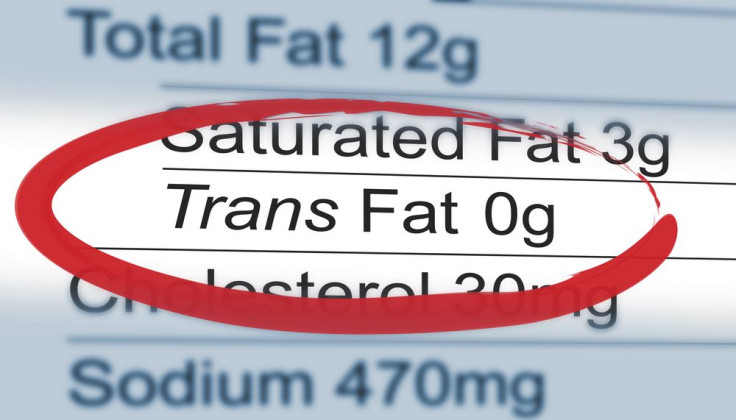Trans Fat Is Hiding In Your Food Despite '0 Trans Fat' Labeling: Stick To Real Food For Your Heart's Sake

Evidence shows that a diet high in trans fat can significantly increase a person’s risk of cardiovascular disease, which is why recent estimates show a reduction in overall consumption. But are packaged food companies sneaking it in underneath our noses? A recent study conducted by the Centers for Disease Control and Prevention revealed that one out of every 10 packaged foods contains hydrogenated oils, the main dietary source of trans fat, although most of their packages read “0 grams” of trans fat.
“Our analysis demonstrates that industrial trans fat is still common in US packaged foods, particularly in some food categories,” the CDC research team said in a statement. “These findings, which are consistent with FDA research findings, provide evidence of the prevalence of industrial trans fat and show that most products that contain PHOs are labeled as containing 0 g of trans fat (84%). This labeling is cause for concern because consumers, seeing the 0 g trans fat on the Nutrition Facts label, are probably unaware that they are consuming trans fat.”
The U.S. Food and Drugs Administration recently determined that partially hydrogenated oils were no longer “generally recognized as safe” for consumption. While some food contains smalls amount of naturally-occurring trans fats from animal byproducts, the majority of dietary trans fat comes from partially hydrogenated oil. Manufacturers can only label their product as “0 grams” of trans fat if they contain between 0 and 0.5 grams of trans fat.
Researchers from the CDC tested 4,340 of the top-selling packaged foods in the United States using the National Salt Reduction Initiative (NSRI) Packaged Food Database. Packaged food categories included baked goods, frozen foods, and snacks. Data on nutritional label and ingredient information was gathered using products purchased from Guiding Stars Licensing Company, manufacturer websites, calls to manufacturers, and visits to supermarkets.
Out of 4,340 of the most popular packaged food products in the U.S., 391 (9 percent) contained partially hydrogenated oils. Among the products that listed partially hydrogenated oils in their ingredient list, 330 were labeled as “0 grams” of trans fat on their Nutritional Facts Label. Half of the products included in the seasoned processed potatoes category contained partially hydrogenated oils along with 35 percent of products in the cookies category. Results indicate that many consumers may underestimate the amount of trans fat they are consuming.
“Comparable PHO-free products were available in every food category assessed and make up 50% or more of products in all categories with PHOs, indicating that removing PHOs from packaged foods is feasible. Our study has some limitations, primarily related to limited availability of nutrition and ingredient data and the unavailability of restaurant data,” the research team added.
According to the American Heart Association, trans fat falls into two categories: naturally-occurring trans fat which is produced in the guts of animals and artificial trans fat created during the industrial process of adding hydrogen to liquid vegetable oils so they are more solid. Not only does trans fat raise your “bad” cholesterol levels (LDL), but it also lowers your “good” cholesterol levels (HDL). People who consume high amounts of trans fat increase their risk of developing heart disease, stroke, and type-2 diabetes.
Source: Clapp J, Curtis C, Middleton A, Goldstein G. Prevalence of Partially Hydrogenated Oils in US Packaged Foods, 2012. Preventing Chronic Disease. 2014.
Published by Medicaldaily.com



























